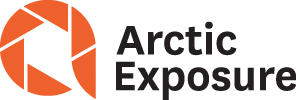FAQ
What’s the difference between a photo workshop/expedition vs. a photo tour?
We lead photo workshops and expeditions, not photo tours, and there’s a big difference. During our workshops and expeditions, you can expect to be absolutely immersed in photography as we provide instruction and inspiration for composition, camera use, post-processing, and more. Many of our clients return for more, as you’ll see in our testimonials.
What’s your cancellation and refund policy?
We do offer refunds, with limitations. For more information, please see our terms and conditions page. We strongly suggest that you obtain travel insurance to cover any unforeseen circumstances that require you to cancel your participation in our workshops and expeditions.
Do you have luggage restrictions?
Space is limited in transit on our workshops and expeditions and we ask that our guests try to limit their luggage to one duffle bag (preferred over a suitcase) and one camera bag. No XL or XXL suitcases or hard case bags. This applies especially to our Greenland and Norway tours due to space restrictions of both checked and hand luggage on ships and airplanes. Space is also limited in our trucks in Iceland.
Please note that hard camera bags and tripods are not allowed in the passenger area of the trucks due to safety reasons.
How do I get from the airport to my hotel?
You’ll land at Keflavik Airport or KEF. It’s about a 45-50 min drive outside of Reykjavik. There are a few options to get to your hotel in Reykjavik.
You can book a bus https://airportdirect.is/transfer/economy, or https://www.re.is/tour/flybus, grab a taxi when you arrive, or we can arrange for private transport for you. Just send us an email to info@arcticexposure.is for a quote.
What’s the difference between the levels of difficulty?
Our workshops can be challenging because of the long days—often beginning before sunrise and ending well after sunset. It is a requirement for all workshops that guests are able to carry their own camera gear and luggage and enter and exit the vehicles without assistance unless otherwise pre-arranged assistance is agreed upon.
Easy: Most photography is taken from within several hundred meters up to as much as a kilometer or so from where we park the vehicle. The terrain is typically level and smooth, but can be uneven and the walks up or downhill have minimal elevation change.
At the easy level, you are able to:
- Stay out for most of the day, driving, walking, and carrying your gear
- Climb and descend several flights of stairs without difficulty
- Walk on uneven ground without assistance
- Walk on wet, slippery surfaces without assistance
- Climb over obstacles (like a log on a trail)
On a ship, you are able to:
- Walk up and down steep stairs to move between decks
- Move about the vessel in rough conditions
- Get into, and out of, small water crafts such as Zodiacs
- Sleep in a bunk bed (upper or lower)
Moderate: You may have to walk up to three kilometers or more at a time over uneven ground, with moderate elevation gain. You may need to walk on ice or sand and through deep snow or boggy ground.
At the moderate level, you are able to:
- Walk for extended periods of time while carrying your gear
- Climb and descend ten flights of stairs without difficulty
- Tie your shoes without the use of a chair
- Cross a small stream using rocks as stepping stones
- Walk through deep sand or snow
- Stand on one foot for a full minute
- Spend long hours in very cold or very hot temperatures
- Go from laying on the ground to standing up without difficulty
Challenging: Some strenuous hikes of several kilometers, often with an elevation gain of several hundred feet on uneven ground. There can be locations where you are required to stand on slippery rocks in water or other unstable ground conditions. Some expeditions may involve acclimation to higher elevations of 10,000 feet and above. If you have any known heart conditions, then a doctor’s note will be required for participation.
At the challenging level, you are able to:
- Walk at a higher elevation with your backpack
- Climb up and stand on your kitchen counter without assistance
- Squat twenty times with your camera backpack on
- From a seated position on the floor, rise to a standing position without using your hands
Do I need travel, medical, or evacuation insurance?
Travel insurance typically covers trip calculation due to an illness, injury, work-related reasons, or family medical reasons. Depending on the provider and type of insurance purchased, coverage can include reimbursement for money paid to airlines, Arctic Exposure Workshops, and other travel providers. It is your choice whether to purchase this insurance or not.
Travel medical insurance typically covers medical treatments, hospitalization, doctor’s visits and more, in countries where your home-based medical insurance will not cover you. We strongly urge you to obtain this insurance for any workshop that is outside of your home country, because your existing medical insurance will not cover you. This coverage is a requirement for some workshops and is noted on the workshop website.
Medical evacuation insurance covers your medical evacuation from a remote region of the world to the nearest hospital for medical treatment. Some policies will even medically evacuate you to your home hospital. This type of insurance is a requirement for some of our more remote workshops and is specifically stated t on the website page, where appropriate.
For all of these types of insurance, we recommend Ripcord, from Redpoint Resolutions or Globalrescue https://www.globalrescue.com/
What happens if I get COVID during a workshop or tour?
If you get symptoms or feel ill during your tour or workshop your guide will take to you get tested for COVID-19.
if you test positive we can help you make arrangements based on how ill you are.
As of February 2022, there are no requirements for isolation when sick. Please consult with your guide as to what is the best course of action.
Or call 1700 for more information. In an emergency always dial 112 for emergency services.
Please note that you travel at your own risk and during the pandemic, there is always a chance that someone gets sick.
Can I bring my drone to a workshop?
Yes, you can bring your drone, there are some restrictions on their use. Here you can read more about using drones in Iceland. Our guides are also happy to help.
Can I bring a friend or spouse along to a workshop?
Sure! Though some workshops are more suitable for the non-photographer than others, if they are interested in nature, spending a longer time on locations while others photograph and come along, it’s no problem. In some of our workshops in Iceland, participation can sometimes be optional e.g. waking up early to catch the sunrise, and when we stay for longer than one night at the same hotel. But this is a photography workshop and photography comes first.
What’s included in the workshop/expedition?
All transportation during the tour, lodging, and meals are included for most workshops. All of the information you need for any specific workshop or expedition should be on the individual webpage, and you are always welcome to contact us if you have further questions. Also, please refer to our Terms and Conditions.
How many guests are in your workshops/expeditions?
It depends on the workshop/expedition. A typical workshop is 6-8 guests with a guide. The size of each workshop is stated on our website under each individual workshop.
What about lunch?
Over the years, we have learned that lunch can take away valuable photography or rest time. To maximize our time, we often take packed lunches from the hotels in the morning before we set out for the day. This could also mean short stops for a sandwich or if there are convenient and quick lunch options available, we will take advantage of them. Not to worry, you will be well-fed during our workshops and expeditions.
What should I bring to the workshop? How should I prepare?
Once you sign up for a workshop, we will send you a packing list and handy information about where the workshop takes place.
What are the basics I should know about my camera before the workshop?
Knowing your camera is important—there are a few basics you should be comfortable with to get the most out of the workshop. Don’t worry, if you need extra help we’ll be there for you! Get in touch with us if you need to know more about the basics and we’ll gladly help you out.
What are your payment options?
We accept Visa and MasterCard as well as bank wires. If you need special payment arrangements or want to work out a payment schedule, that’s no problem – just ask. We are not able to accept American Express cards.
What happens if the weather is bad?
Unfortunately, we can’t control the weather, but we’ll do our best to ensure that you have a great time, no matter the conditions. Bad weather often brings great shooting opportunities, and we feel there’s always something to shoot! Please refer to our Terms and Conditions for more information.
Do you guarantee a sighting of the northern lights/aurora borealis?
If we could control the weather, we probably would. But until then, no, we don’t guarantee sightings of them. We try our best to follow forecasts and see if there is an opportunity in our area. Please note that the northern lights are not visible during the spring/summer in Iceland. September – April is the season for viewing the northern lights in Iceland.
What about single rooming?
Most workshops are set up for double occupancy but we do offer single rooming on most workshops, for a fee. If you’re traveling alone, we’re happy to help you find a suitable roommate if one signs up.
If not, the cost of a single room is stated under each workshop on the website.
To be fair to all guests, if you require the use of a CPAP machine, then you must choose single rooming.
Is my personal information secure?
Please review our privacy and cookie policy. We will never sell, rent or give away your email address or any personal information that you entrust with us. We will never spam you, however, we do send a monthly newsletter, which we hope you’ll love, that you can always opt-out of. We never have access to your credit card information. And any health or medical information shared with us is strictly confidential.
I got a suspicious email; how can I make sure the email is really from Arctic Exposure?
You can do a few things to ensure it’s from us.
- Check the send email address. Is it info@arcticexposure.is? If not, it’s not from us.
- Does the email or the website have an alternative ending to .is? like .com .ru .co.uk or something else? If yes, then it’s not from us.
- We don’t ask for wire transfers, we don’t use bank accounts outside of Iceland, and we dont’ use apps like Venmo or Zelle. If the email asks for something like then, it’s not from us.
- You can always reach out to us you can find our details under the contact page.

